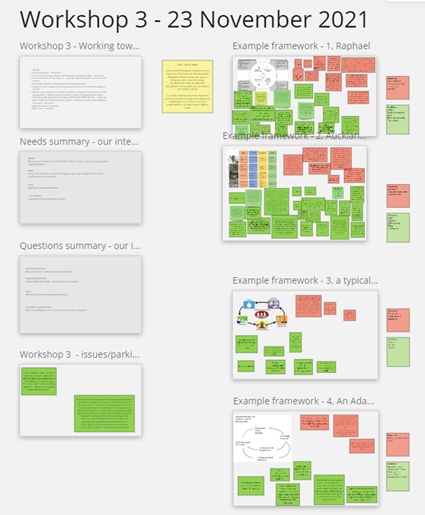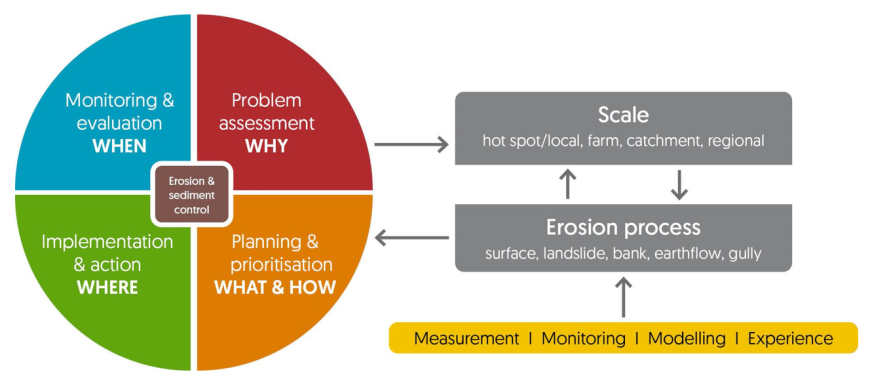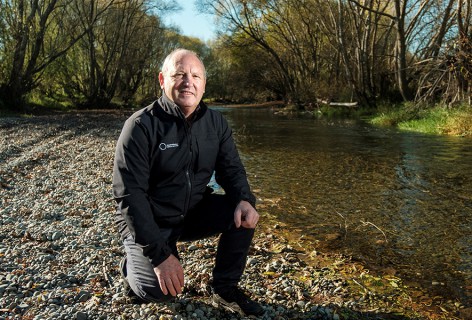- Home
- ...
- Smarter Targeting of Erosion Control (STEC)
- Smarter Targeting of Erosion Control (STEC) News
A co-developed evaluation framework to assess the effectiveness and performance of erosion and sediment control mitigation

Figure 1. An example Miro board from Workshop 3.
Along with some of the STEC programme’s stakeholders from a range of regional and central government, we co-developed an evaluation framework to assess the effectiveness and performance of erosion and sediment control mitigation in New Zealand. As part of this year-long process, online virtual workshops/hui were used because face-to-face meetings were not feasible during the Covid pandemic. An online collaboration tool (Miro) was used to collect input from workshop participants to help frame the needs and questions a framework would cover and to help prioritise the most important elements to be included in the framework. An example of one of the Miro boards is shown in Figure 1.
To help workshop participants, we followed the definitions outlined in Phillips et al. 2020. Erosion and sediment control (ESC) effectiveness was defined as the extent to which the soil conservation treatment or ESC practice achieves the desired outcome. Consistent and repeatable methods are required to assess effectiveness and enable comparisons. ESC performance, while related to effectiveness, is the actual measure of sediment reduction, and is usually expressed as a percentage relative to a control situation.
Existing frameworks and approaches for assessing ESC effectiveness were examined for their potential application (although an in-depth formal literature review was not conducted as part of the project). Initial feedback (likes, dislikes, and suggestions) was used to construct a ‘straw man’ V1.0 framework, which was further refined (V2.0) based on subsequent written and verbal feedback. The final version (Figure 2) was presented at the NZARM conference in October 2022.

Figure 2. The final framework for assessing the performance of erosion and sediment control.
The left-hand side of Figure 2 is a cut-down version of a typical five-stage generic planning or project framework, which should be familiar to many readers. The top right-hand part focuses on the scale of assessment and what erosion process is being assessed. The framework focuses on the five main types of erosion in New Zealand that are well understood by land managers and used in land management tools such as the Land Use Capability classification: surface, landslide, bank, earthflow, and gully.
The scale at which ESC is applied also needs to be considered. While the actual control measure is implemented at a specific locality, its assessment may be undertaken at several different scales. It is also important to note that in most situations, methods, tools, technologies, and models are not appropriate at all scales and different approaches are required depending on the scale of enquiry.
Lastly, the bottom right-hand part of Figure 2 provides the ‘methodology’ for assessing performance. As we have defined it, performance of an ESC mitigation is the quantitative measure of its effectiveness, expressed as a percentage. To obtain such a metric a biophysical variable needs to be assessed. This could include things such as water clarity, suspended solids concentration, trapping efficiency, vegetation cover, or vegetation growth rates. The assessment of such variables can be obtained by any of the four methods outlined (measurement, monitoring, modelling or experience), or, as is common, a combination of them.
The co-developed framework illustrated in Figure 2 could be extended and developed into a tool. Such a tool could be a process, or it could be more of a knowledge base providing the user with a range of scale- and erosion-process-specific models, tools, and methods. The framework helps conceptualise the problem and may outline what needs to be considered, even if it doesn’t provide in-depth guidance about what to do and in what order to do it.
References
Phillips CJ, Basher L, Spiekermann R 2020. Biophysical performance of erosion and sediment control techniques in New Zealand: a review. Manaaki Whenua – Landcare Research contract report LC3761.
Schwarz M, Poesen J, Rey F, Holbling D, Phillips C 2020. Bio-physical performance of erosion and sediment control/mitigation techniques – an international comparison to common practices in New Zealand. Manaaki Whenua – Landcare Research contract report LC3891.
